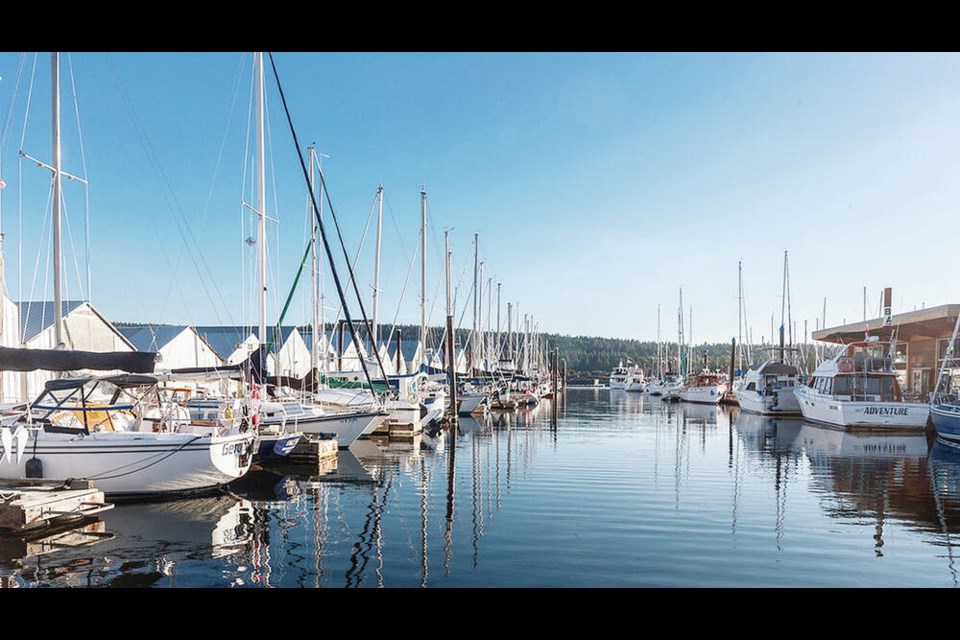The non-profit group that runs Ladysmith Community Marina is wondering what will happen to the facility now that the province and town have signalled that the water lease is being transferred to a local First Nation.
That leaves the fate of $5 million worth of docks and other infrastructure — added over the years through donations and grants and worked on by volunteers — up in the air.
The province has been leasing the water lot to the town, which has agreements with the Ladysmith Maritime Society to manage and operate the marina.
Last year, however, the province and Stz’uminus First Nation penned a reconciliation agreement that included plans for the nation to take over the water lot lease and lead an environmental cleanup in the harbour.
The agreement included providing the nation with $10 million over five years to support remediation in Crown areas of the harbour, a news release said at the time.
Stz’uminus Chief Roxanne Harris said then that the First Nation was looking forward to “next steps in the implementation.”
In November, the town told the Ladysmith Maritime Society it would need to remove its infrastructure from the water lot by the end of December of this year, said Kelly Daniels, president of the society, which was created 38 years ago.
The date of the planned transfer of the lease has not been revealed, however.
The Town of Ladysmith’s current lease expires in 2029, as does the society’s agreements to use the water lot.
The town has said it agrees with the province’s plan to move up the expiry date in order to transfer the lease to the First Nation.
“The town continues to support the transfer process and remains hopeful that all parties can reach a co-operative solution,” it said in a recent statement, adding the town and Stz’uminus First Nation have a “mutual interest” in seeing the marina operations continue on the water lot.
Daniels said the society wants to work with the First Nation on the transition “from one waterfront stewardship board — the Town of Ladysmith — to another,” while maintaining management of the community marina “for the benefit of the people.”
“We think it would be an amazing asset for the community with the First Nation and ourselves working together on the waterfront.
“We are really excited about the potential and the change of lease over to the First Nation. We just want to be part of that.”
So far, however, a new operating arrangement between Stz’uminus First Nation’s Coast Salish Development Corp. and the society has not been reached.
Ray Gauthier, chief executive of the Coast Salish Development Corp., could not be reached for comment. The Coast Salish Development Corp. is the economic development arm of the Stz’uminus First Nation.
The Ladysmith Maritime Society is holding a public meeting on May 3 to update the community on the situation.
The marina has about 170 pleasure craft mooring on an annual basis and a dozen liveaboards, with about 900 feet of dock for visiting vessels.
Approximately 3,500 boats visit annually from as far away as California, said chief executive Richard Wiefelspuett.
Aside from running the marina, the society stages festivals and marine and historical programming that attracts tourists to the community and has brought thousands of people to the area, Wiefelspuett said.
The marina was originally created out of 300 feet of donated log boom, and every year, about 200 volunteers put in 10,000 t0 12,000 hours on the facility, making it state-of-the-art, he said.
As a non-profit charitable organization, part of the society’s mandate is to provide moorage to the community, Daniels said — it has a policy that moorage rates should be 10 to 15 per cent below the average in the area.
Together, the marina’s assets, including docks, a floating museum, a collection of restored historical boats in working condition, a contemporary-style welcome centre, a seasonal café, boathouses, and a sea-life exhibition, are worth about $5 million, Daniels said.
Prior to the eviction notice, the society applied for two grants, Wiefelspuett said Tuesday.
A $330,000 grant from the province through a COVID relief program was subsequently approved to cover the cost of expanding the museum and adding two boathouses for the heritage boats.
But because of uncertainty about the future of the facility, the province asked for the funds to be returned, he said.
The society still has $180,000 from a B.C. Gaming grant to pay for half the cost to upgrade the visitor dock, he said.
cjwilson@timescolonist.com
>>> To comment on this article, write a letter to the editor: letters@timescolonist.com



